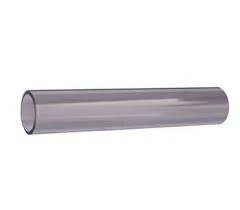செப் . 22, 2024 08:00 Back to list
sprinkler hdpe pipe
Understanding Sprinkler HDPE Pipes A Comprehensive Overview
Sprinkler systems have become an essential component in modern agriculture and landscaping, providing efficient irrigation solutions for various applications. Among the materials used in these systems, High-Density Polyethylene (HDPE) pipes have gained significant popularity due to their durability, flexibility, and resistance to environmental factors. This article explores the features and benefits of HDPE pipes in sprinkler systems, emphasizing why they are a preferred choice for irrigation.
What is HDPE?
High-Density Polyethylene (HDPE) is a thermoplastic polymer made from petrochemical products. Its unique molecular structure contributes to its strength and rigidity compared to other types of polyethylene. This makes HDPE an ideal material for pipes that require high resistance to stress and pressure. Moreover, HDPE has excellent resistance to chemicals, making it suitable for various applications, including water distribution and agricultural irrigation.
Advantages of HDPE Pipes in Sprinkler Systems
1. Durability One of the key benefits of HDPE pipes is their remarkable durability. They can withstand extreme temperatures and have a long service life, often exceeding 50 years. This makes them an ideal choice for irrigation systems that require long-term reliability.
2. Corrosion Resistance Unlike metal pipes that are prone to rust and corrosion, HDPE pipes do not corrode when exposed to chemicals or moisture. This characteristic ensures that the water quality remains uncompromised, which is crucial for agricultural productivity.
3. Flexibility HDPE pipes are known for their excellent flexibility, allowing them to be installed in a variety of terrains without the need for additional fittings. This adaptability reduces installation costs and time, making them a practical option for farmers and landscapers.
sprinkler hdpe pipe

4. Lightweight and Easy to Handle Compared to traditional piping materials like PVC or metal, HDPE pipes are significantly lighter. This ease of handling simplifies transportation and installation, reducing labor costs and improving efficiency during the setup of sprinkler systems.
5. Hydraulic Efficiency HDPE pipes have smooth inner surfaces that minimize friction loss and enhance water flow. This hydraulic efficiency means that less energy is required to pump water through the system, resulting in lower operational costs and energy consumption.
6. Environmental Considerations HDPE is a recyclable material, which aligns with sustainable practices in agriculture. When the pipes reach the end of their lifecycle, they can be recycled into new products, minimizing environmental impact.
Applications of HDPE Pipes in Irrigation
The versatility of HDPE pipes makes them suitable for various irrigation systems, including agricultural fields, golf courses, parks, and residential gardens. In these contexts, they can be used for surface irrigation, drip systems, and sprinkler installations, catering to varying water needs of different plants.
Conclusion
In summary, HDPE pipes are an excellent choice for sprinkler systems due to their durability, flexibility, and resistance to degradation. Their lightweight nature and hydraulic efficiency make them an ideal solution for modern irrigation needs. As the demand for sustainable and efficient irrigation solutions continues to grow, HDPE pipes are likely to remain at the forefront of agricultural innovation. Embracing this technology not only enhances productivity but also contributes to a more sustainable approach to water management in farming and landscaping practices.
-
High-Quality PPR Pipes and Fittings Durable ERA PPR & PVC PPR Solutions
NewsJul.08,2025
-
Black HDPE Cutting Board - Durable, Non-Porous & Food Safe HDPE Plastic Cutting Board
NewsJul.08,2025
-
High-Quality CPVC Panel Durable HDPE & PVC Panels Supplier
NewsJul.08,2025
-
Double PE Welding Rod Supplier - High Strength, Durable & Versatile Welding Solutions
NewsJul.07,2025
-
High-Quality PVC-O Pipe Supplier Durable 75mm PVC Pipe & Connections Leading PVC Pipe Company
NewsJul.07,2025
-
HDPE Drainage Pipe Supplier – Durable & Corrosion-Resistant Solutions
NewsJul.06,2025

